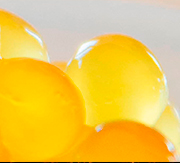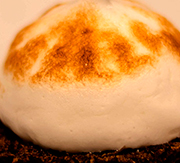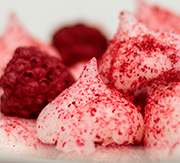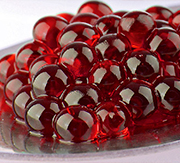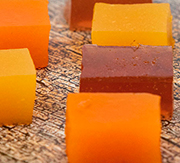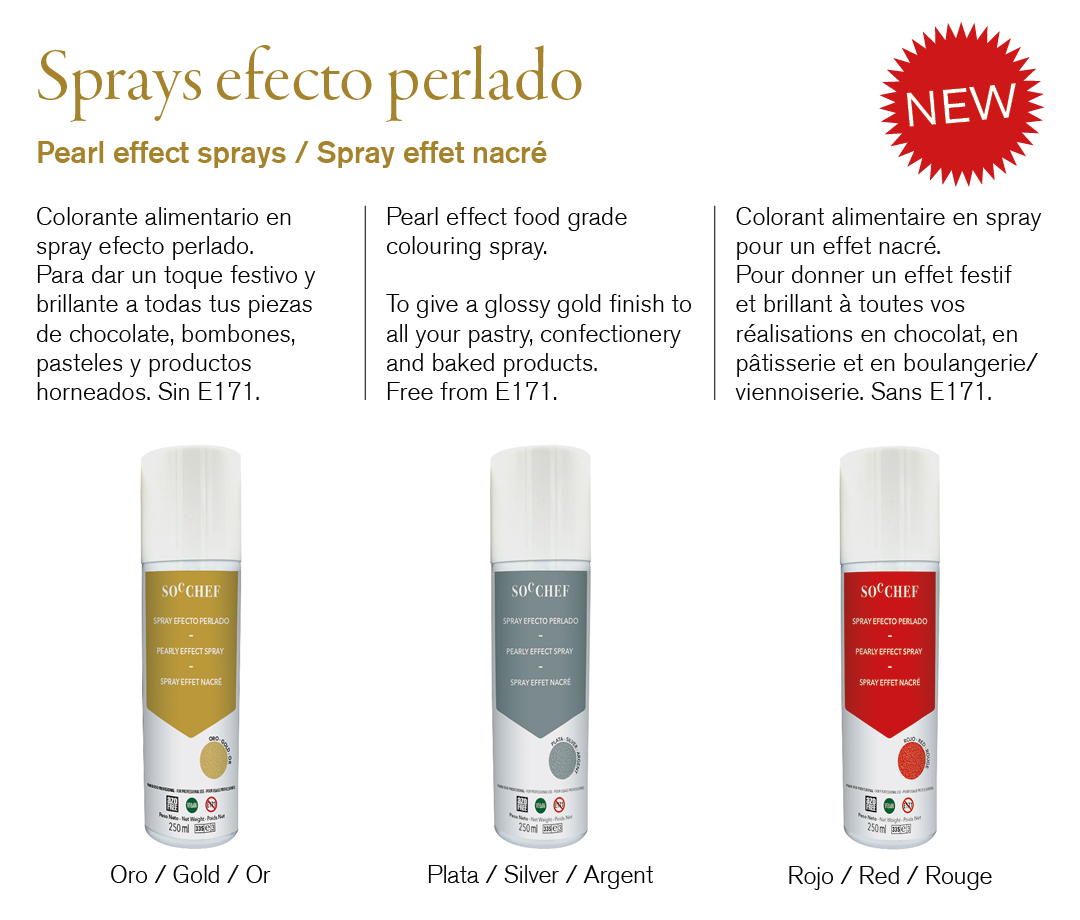TEXTURIZINGS
Known by many as the stars of molecular cuisine or avant-garde cuisine, ingredients of this type have been part of the food industry for centuries, including agar-agar, discovered in Japan in the mid-17th century, which was not used as a solidifying agent in the west microorganism cultures until 1881.
Texturising agents are natural ingredients that help to change the state of an ingredient or mixture by modifying its texture while maintaining its organoleptic characteristics. This creates a wide range of possibilities for modern gastronomy.
These types of ingredients are used to emulsify, gel, spherify, thicken, stabilise, aerate, bind and more. With the rise of molecular cuisine, they’ve become must-haves in every chef’s kitchen.
When a chef makes a creation or applies a technique, their aim is always to achieve consistency, create body, or to impart a certain viscosity to their preparation. They often use food texturisers for this because of their efficiency, stability and ease of use, and also because they do not add flavour or colour to their creations.
We know these food additives still have a bad reputation, but this is due to a lack of information, since most texturisers are of plant or animal origin. They are FDA and EFSA approved ingredients qualified as safe.
The use of texturisers and texturising techniques is transforming cuisine. They offer only benefits from a nutritional and artistic-gastronomic point of view, since they allow chefs to transform their ideas into real dishes..
Benefits of natural texturising agents
- They make very visually appealing dishes and improve flavour.
They offer chefs solutions to convert their ideas into attractive creations or recipes that surprise diners, either by their shape or by their texture.
- They’re easy to work with.
They’re easy to use, but they do require knowledge of their purposes and requirements.
- They have no flavour or colour.
They do not add flavour or aromas to preparations. This is key, since it means chefs can use them without having to change their recipes, and without altering the final result.
- They reduce the cost of preparations.
Using them can reduce the cost of a recipe, since they’re used in small quantities but have a significant impact.
- They’re healthy and nutritious.
They provide solutions for patients and elderly people with swallowing problems.
Hydrocolloid texturisers are also primarily fibres that contain no calories and help in the digestive process.
Types of natural texturisers or additives
SOC CHEF provides technical specification data sheets for all our products to our customers to facilitate understanding of the products’ requirements.
Most common texturisers
The most commonly used texturisers are gelling and thickening agents. There is a very wide range of gelling and thickening products.
Which texturising agent should I use for my recipe?
Consult our table of natural texturising agents to learn more about applications, uses and dosages.
High-quality texturising agents
SOC CHEF’s natural texturising agents are used by a large number of professional chefs for their top-quality raw ingredients and wide range of formats and packaging options.

Martín Berasategui
“I place a great deal of importance in our collaboration, because, like me, the people of SOC CHEF have a deep respect for nature and providing professionals with top-quality raw materials ensure constant creativity.”



